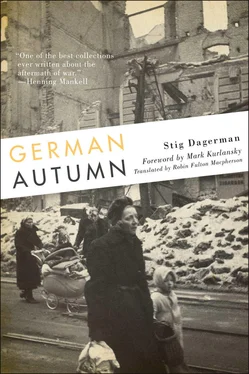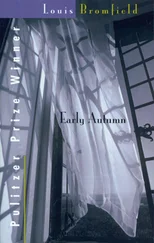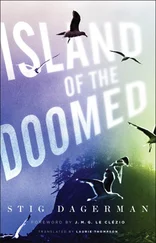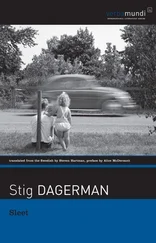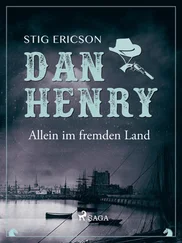Briefly, the journalist who backed out of the autumn cellar should have been humbler, humble in the face of suffering, however deserved it may have been, for deserved suffering is just as heavy to bear as undeserved suffering; it is felt just as much in the stomach, in the chest, in the feet, and these three very concrete pains should not be forgotten in the raw draught of bitterness blowing from a rainy German post-war autumn.
When every available consolation has been exhausted a new one must be invented even if it should turn out to be absurd. In German cities it often happens that people ask the stranger to confirm that their city is the most burnt, devastated and crumbled in the whole of Germany. It is not a matter of finding consolation in the midst of distress — distress itself has become a consolation. The same people become down-hearted if you tell them that you have seen worse things in other places. It may be that we have no right to say so for each German city is ‘the worst’ for those who have to live in it.
Berlin has its amputated spires and its endless rows of shattered government palaces, whose fallen Prussian colonnades rest their Greek profiles on the pavements. In Hannover King Ernst August sits before the station on the only fat horse in Germany and is practically the only object to have emerged unscathed in a city which once had dwellings for 450,000 people. Essen is a terrible dream-landscape of denuded, freezing iron-constructions and ravaged factory walls.
Cologne’s three bridges have spent the last two years submerged in the Rhine, and the cathedral looms melancholy, sooty and alone in a pile of rubble with a fresh red wound along one side which seems to bleed at twilight. The small, black, threatening medieval towers have fallen into Nuremberg’s moats, and in the small towns of the Rhineland ribs stick out of bombed timber-houses. Yet there is still a city that charges admission to a ruin: Heidelberg, which was spared the onslaught and whose beautiful old castle ruin looks like a demonic parody in an age of ruins.
Perhaps on the whole it is ‘worst’ everywhere. But if you have a liking for superlatives, if you want to be an expert in ruins, if you would like to have a pattern-card showing everything a wiped-out city can offer by way of crumbling walls, if you would like to see not a city of ruins but a landscape of ruins drearier than the desert, wilder than a mountain-top and as far-fetched as a nightmare, there is still only one German city that will do, and that is Hamburg.
There is an area in Hamburg that once had straight wide streets, squares with flower-beds, five-storey houses with lawns, garages, pubs, churches and all kinds of public amenities. It begins near one station on a suburban line and continues to the next station and a little beyond.
Travelling on this line you can sit for a quarter of an hour with an unbroken view of something resembling a vast dumping-ground for shattered gables, free-standing house-walls whose empty window-holes are like wide-open eyes staring down on the train, unidentifiable fragments of houses with broad black smoke-scars, tall and boldly sculptured as victory monuments or small as modest gravestones.
Rusty girders poke out of the gravel-heaps like the stems of long-since foundered boats. Slender pillars which an artistic fate carved out of collapsed tenements rise from white piles of crushed bath-tubs or from grey piles of stone, powdered brick and melted radiators. Carefully manipulated façades, with nothing to be façades for, stand there like scenery for a play that was never performed.
All the figures of geometry are on display in this three-year-old variation of Guernica and Coventry: regular rectangles of school walls, small or large triangles, rhombi and ovals of the outer walls of the huge tenements that as recently as the spring of 1943 loomed between the stations of Hasselbrook and Landwehr.
Through this gigantic wasteland the train proceeds at a normal pace for about a quarter of an hour and during that time neither my silent guide nor I catch sight of a single human being in an area which was once one of Hamburg’s most densely populated. The train, like all German trains, is packed full, but apart from the two of us no one looks out of the window to catch a glimpse of what is perhaps Europe’s most dreadful collection of ruins. When I look round at the other passengers I meet glances that say: ‘Someone who doesn’t belong here.’
The stranger betrays himself immediately through his interest in ruins. Becoming immune takes time, but it does happen. My guide became immune ages ago, but she has a purely personal interest in the moonscape between Hasselbrook and Landwehr. She lived there for six years but has not seen it again since an April night in 1943 when the bombs rained over Hamburg.
We get off the train at Landwehr. I assume we must be the only people to leave the train there but we are not. There are others than tourists who have cause to come this way — there are people who live here, though this could hardly be suspected from the train window. And it is hard to realize even from the street. We walk for a while on what had been the pavements of what had been the streets and look for what had been a house but never find it. We have to circumnavigate contorted remains which on closer examination turn out to be burnt cars lying on their backs in the rubble. We look in through the gaping holes in torn houses where the girders twist like snakes down from floor to floor. We stumble over coiling water-pipes. We pause before houses where the outer wall has been ripped away, reminding us of those popular plays in which the audience can watch life being lived on several different levels simultaneously.
But here any attempt to spy out even the memories of human life is in vain. Only the radiators still cling to the walls, like big frightened beasts, but otherwise everything that could burn has vanished. There is no wind today but when the wind is high it bangs those radiators and the whole deathly ex-suburb echoes with a weird hammering. Now and again it happens that a radiator suddenly comes loose and falls down and kills someone who is groping around for coal in the innards of the ruin.
Looking for coal, that is one of the reasons why people step off the train at Landwehr. With a lost Silesia in mind, with the prospect of losing the Saar and with a Ruhr whose fate is by no means uncontested, sarcastic Germans refer to the ruins as Germany’s only coalmines.
But she in whose company I look for a house that does not exist is not so sarcastic. She is a half-Jewish German who by making herself as invisible as possible managed to survive the terror and the war. She was in Spain until Franco’s victory made it impossible for her to stay there and then she came back to Germany. She lived near Landwehr until the house was blown to pieces by English bombs. She is a vigorously bitter woman who lost all her possessions in the bombing of Hamburg and who had already lost her faith and hope in the bombing of Guernica.
We wander around in this endless shambles of a graveyard where it is quite hopeless to find one’s way: there is nothing to distinguish one annihilated block from another. On the occasional surviving wall there may hang a derisive-looking plate with a street name; of an entire tenement there may be nothing left but the main doorway crowned with a meaningless number. Signboards from old greengrocers’ and butchers’ shops which were buried under the wreckage stick up out of the rubble like inscriptions on gravestones, but in a building near by a light suddenly sparkles out from a cellar.
We have reached a district whose luck it was to come through the destruction with its cellars intact. The buildings have collapsed but the cellar roofs have held and now they give shelter to hundreds of bombed families. Through the small windows we see the small rooms with bare cement walls, a stove, a bed, a table, and at best a chair. Children play with stones on the floor, a pot stands on the stove. In the ruin above, white children’s clothes flutter on a washing-line stretched between a twisted water-pipe and a fallen iron girder. The smoke from the stoves finds its way out through the cracks in disintegrating walls. Empty prams wait outside the cellar windows.
Читать дальше
